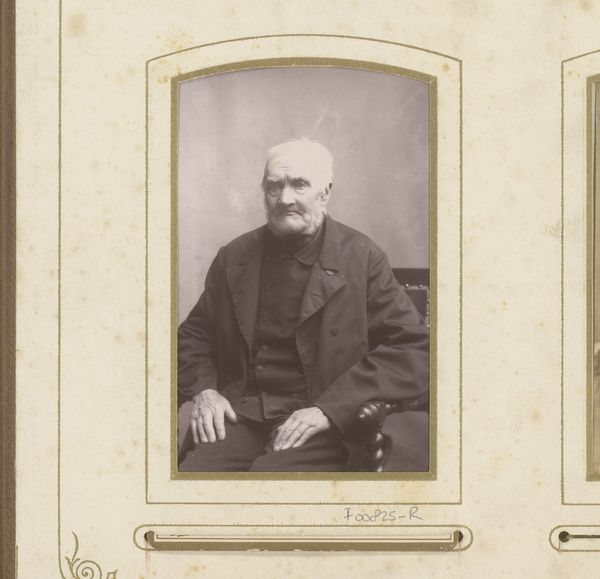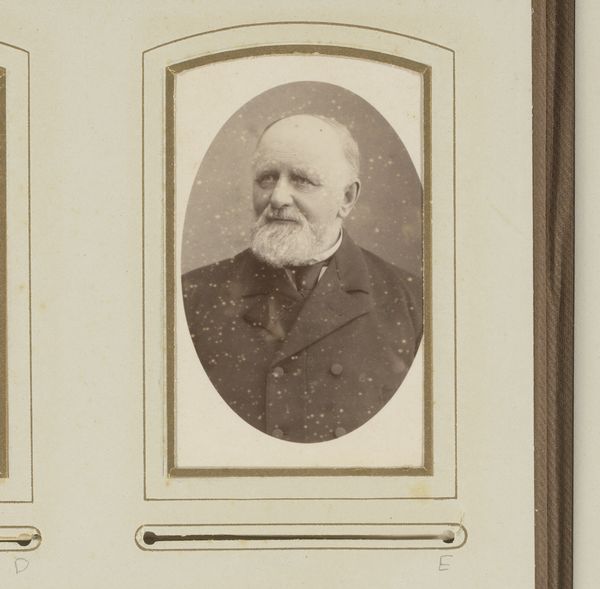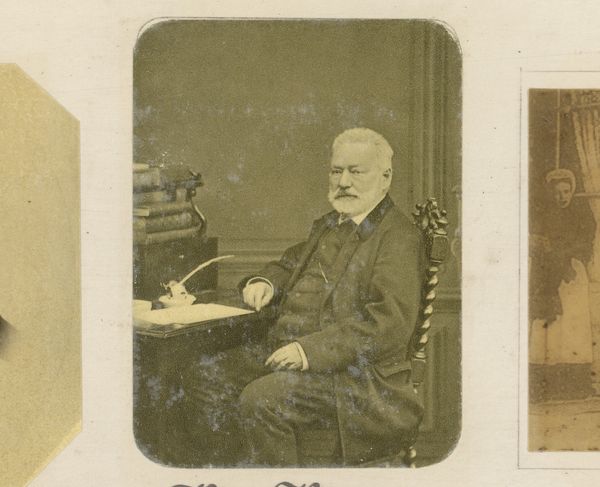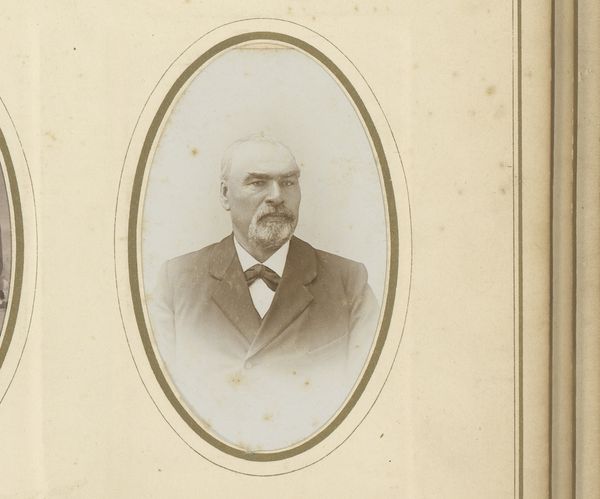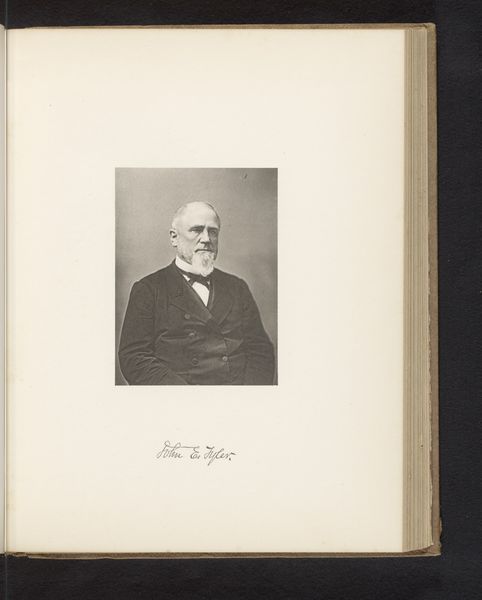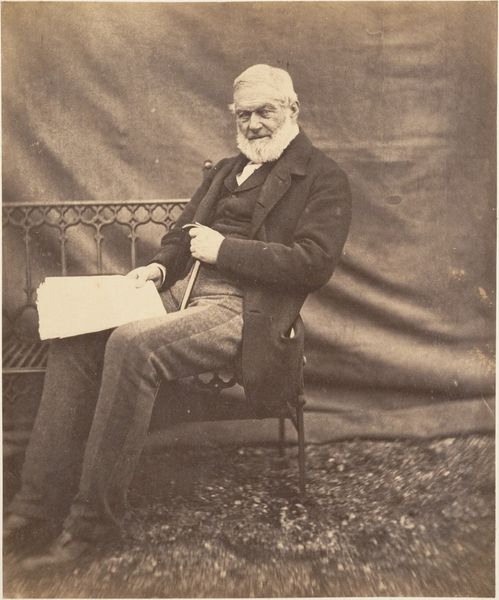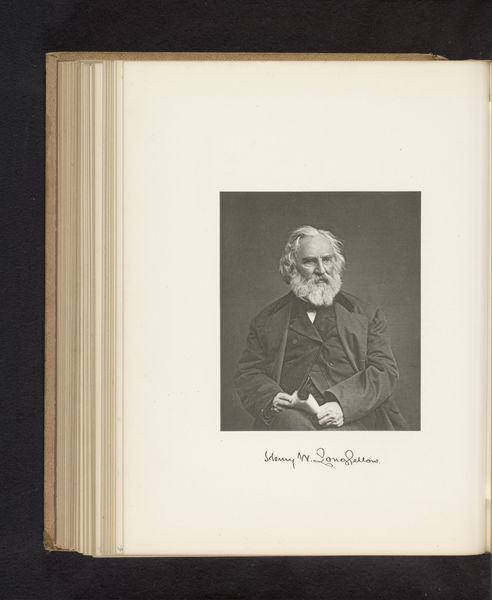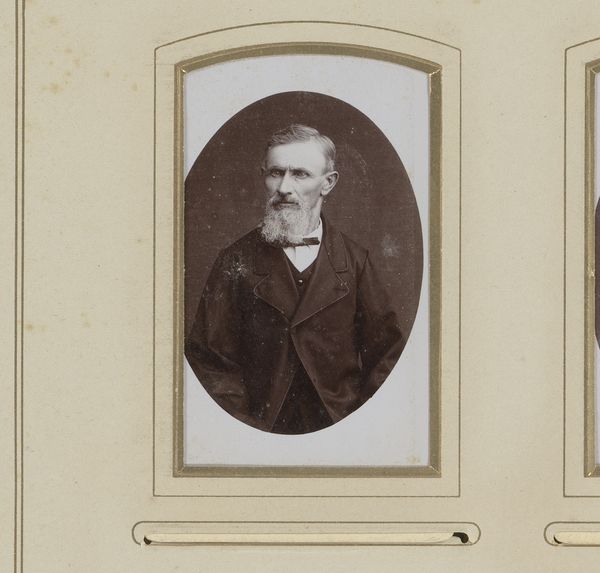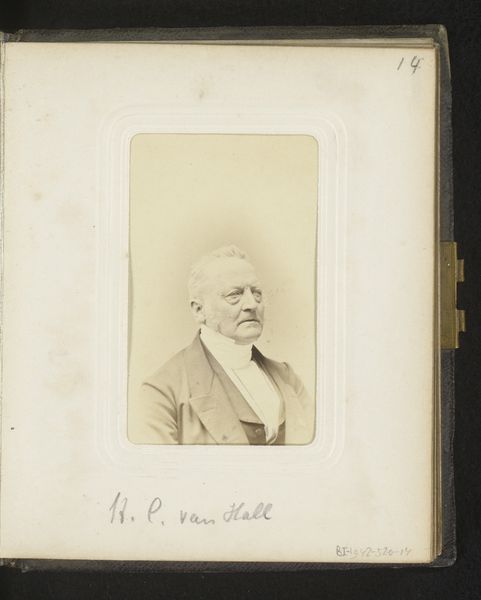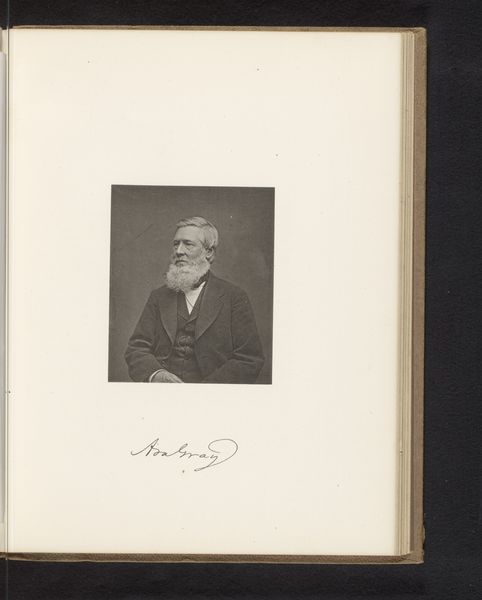
photography
#
portrait
#
16_19th-century
#
photography
#
realism
Dimensions: height 234 mm, width 189 mm
Copyright: Rijks Museum: Open Domain
Curator: Right, here we have an arresting photographic portrait of Victor Hugo. It was captured sometime before 1876 by Etienne Carjat and it is housed right here in the Rijksmuseum. What strikes you about it at first glance? Editor: Its gravity, immediately. The pose, those eyes… Hugo appears settled, yet intensely aware. He seems to absorb everything. But it’s also a very materially present photograph. The textured paper, the slight imperfections in the print – they give it a tangibility that digital images lack. Curator: Precisely. Knowing Carjat’s focus on capturing not just likeness but also essence, I wonder what he aimed to reveal beyond Hugo’s iconic status? Perhaps it’s the intimacy despite the formal attire, a glimpse of the inner man. The muted tones create an atmosphere almost sepulchral. Editor: Interesting. To me, those muted tones speak to the very processes of early photography: the collodion wet plate, the silver salts, the specific darkroom practices involved. It is not a simple snapshot but rather an intricate process where each material interacts to render his image—each mark has weight, each surface holds something real and historical. Curator: True. The technology, as you pointed out, inevitably influences our perception. Do you think the Realist label accurately encapsulates this, though? There’s a romance about it as well. Hugo isn’t merely presented; he is ennobled. The soft focus around his face softens him just enough so that he seems slightly idealized. Editor: It is interesting that, to create such softened effects in realism, certain levels of intervention with the chemistry are necessary; it complicates the concept, right? Also, the choice to present the image in book format speaks to questions of dissemination and the burgeoning market for photographic portraits at that time. Each print made labor. Each mark counts. Curator: Absolutely, we're speaking of objects created through laborious production. Perhaps, by understanding its layers—the science, the intention, and the social conditions—we come closest to comprehending both the subject, Victor Hugo, and the artist, Étienne Carjat. Editor: Agreed, this material consideration really opens our reading of photography's capacity for storytelling, especially during a period of rapid industrial change and social reformation.
Comments
No comments
Be the first to comment and join the conversation on the ultimate creative platform.
